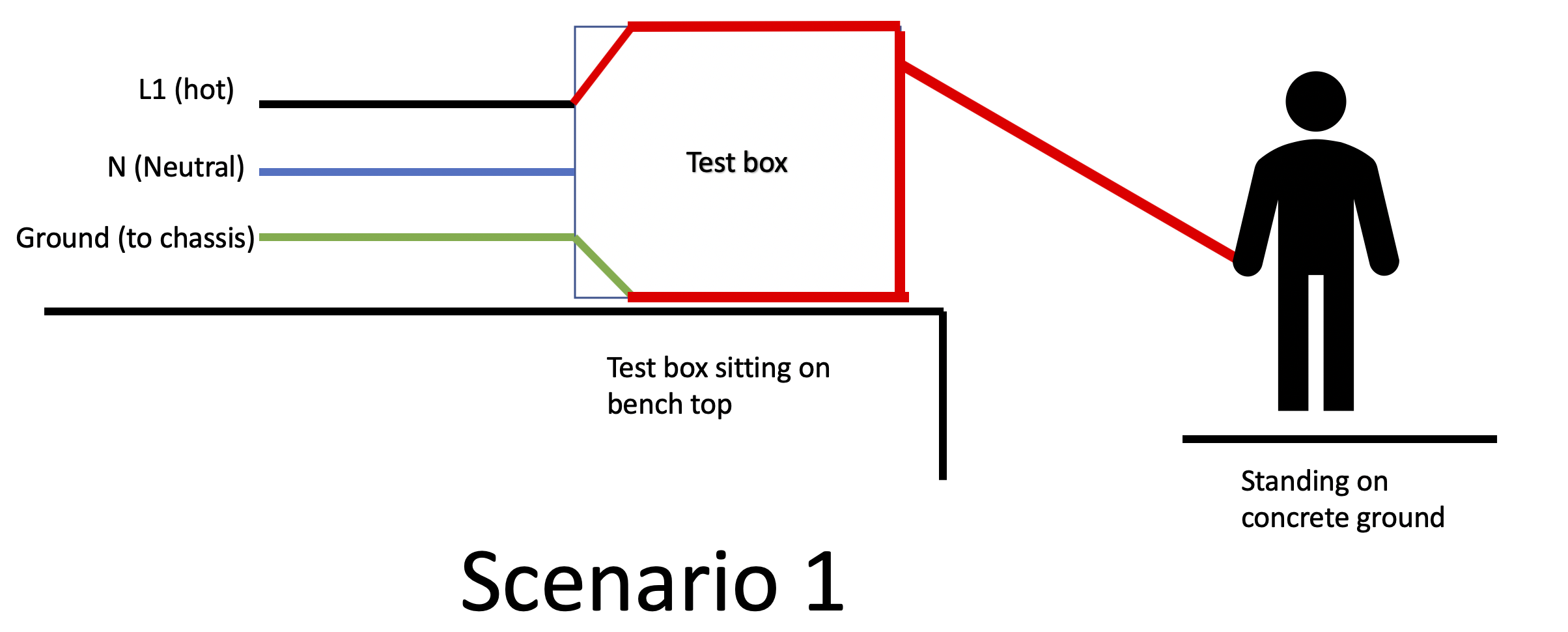What I have always learned is that current leaves the source and returns back to the source, forming a closed circuit.
Here are the two thought experiments I had and got confused:
Scenario 1:
Here I have a black (hot), white (neutral) and green (ground) wires coming from the wall and into the box where the ground wire is connected to the chassis of the metal test box.
If the black wire touches the metal casing and a person is touching the case, then the ground wire would lower the entire resistance since the person and the ground forms a parallel resistor of the circuit and drop all the voltage upstream so the person would be safe.
Scenario 2:
What if the ground wire isn't connected to the chassis and somehow the hot wire made a connection to the chassis?
My inclination would be the current travels through the person, but here is the dilemma in my head. How does the current return back to the source from the person standing on the concrete ground? Are we really saying the current travels from the concrete, into the building and somehow back to upstream?
If the person is receiving an electric shock from scenario 2, then how does the current get back to the source?
If there is no closed circuit for the fault current to return to source, shouldn't the person be safe since it is an open circuit?


